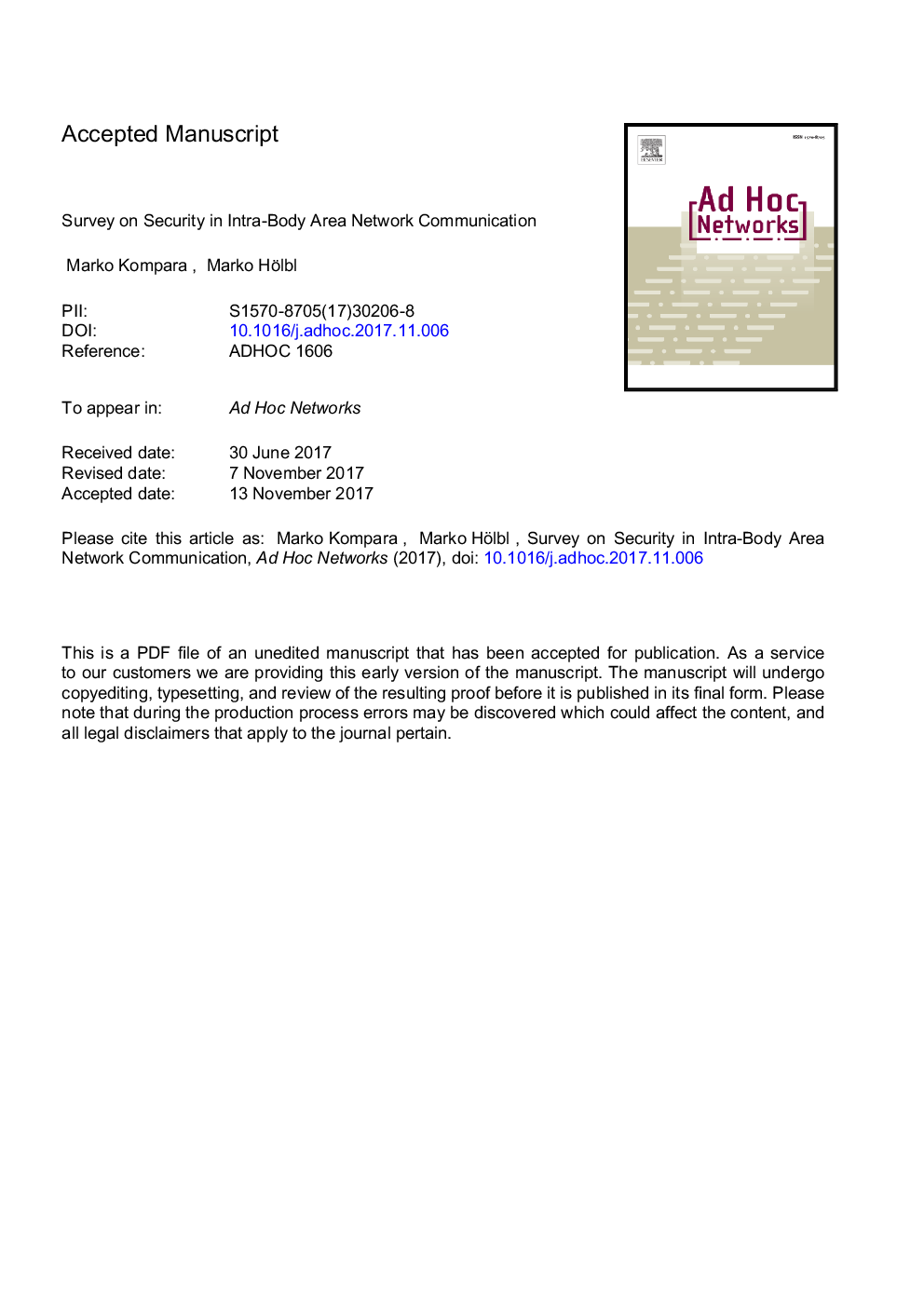| Article ID | Journal | Published Year | Pages | File Type |
|---|---|---|---|---|
| 6878622 | Ad Hoc Networks | 2018 | 44 Pages |
Abstract
With the advances in microelectronics, embedded computing, and wireless communications, the interest in Body Sensor Networks has risen sharply and has enabled the development and implementation of such networks. A Body Sensor Network is constructed from sensor nodes distributed in and on the user's body. The nodes form a wireless network that collects physiological data and forwards it on. This sort of network has wide application prospects in the future of healthcare. The collected data is highly private and must, therefore, be protected adequately. The security mechanisms usually deployed depend heavily on the key agreement scheme. Because of the reliability requirements, energy efficiency, and hardware constraints, building a key agreement scheme for a Body Sensor Network can be quite a challenge. This paper presents a state-of-the-art overview of security in Body Sensor Networks, focusing on proposed key agreement schemes, ways they are built in, and the methods used to evaluate their security and performance. Results show that the community is very much split between the traditional key agreement schemes and schemes that take advantage of physiological or other signals to exchange a key. Security analysis is rarely performed with formal methods; instead, descriptive analysis is commonplace. There are no standards or guidelines on measuring a scheme`s efficiency. The authors therefore used different methods and, consequently, schemes can be difficult to compare.
Keywords
Related Topics
Physical Sciences and Engineering
Computer Science
Computer Networks and Communications
Authors
Marko Kompara, Marko Hölbl,
